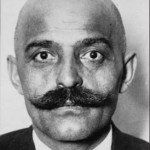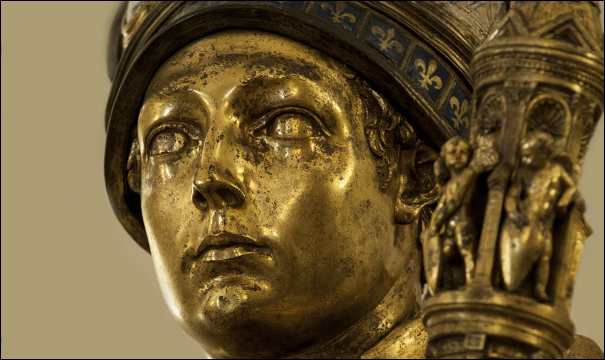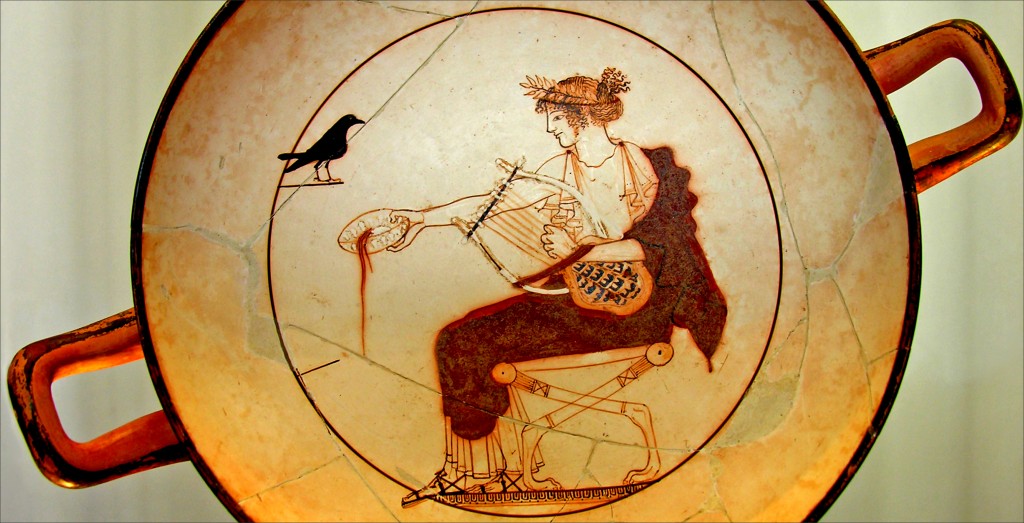 The road where I walk most days has only a moderate amount of traffic. Near my house it’s paved, but further on it turns to gravel. There’s no posted speed limit, but most drivers don’t exceed thirty miles an hour. Besides being a routine that keeps me healthy, walking is also a time when I can concentrate on trying to remember myself and put aside the cares and identifications of my day-to-day life. I have many little exercises that I use to keep myself focused in the moment, but in truth often to see what is in front of me is exercise enough. Over the years I have found that walking can clear my mind of stagnant thoughts because as I make my way down the road the impressions constantly change. This continuous stream of new impressions is an antidote to a mind caught in an obsession.
The road where I walk most days has only a moderate amount of traffic. Near my house it’s paved, but further on it turns to gravel. There’s no posted speed limit, but most drivers don’t exceed thirty miles an hour. Besides being a routine that keeps me healthy, walking is also a time when I can concentrate on trying to remember myself and put aside the cares and identifications of my day-to-day life. I have many little exercises that I use to keep myself focused in the moment, but in truth often to see what is in front of me is exercise enough. Over the years I have found that walking can clear my mind of stagnant thoughts because as I make my way down the road the impressions constantly change. This continuous stream of new impressions is an antidote to a mind caught in an obsession.
During my many walks I’ve often observed that there is something about the physics of seeing a car coming toward me that is very disturbing. The weight of the car combined with its speed makes it a real threat to the well-being of the body. You would think that this insight would be welcomed by the instinctive function, but it’s not. The mechanism for survival in the instinctive center takes great pains to hide these kinds of perceptions. Though the instinctive center has adapted itself to staying out of the path of large, fast-moving objects, like cars, it seems to prefer to alienate such experiences from our general knowledge of ourselves. Even though we are adept at removing ourselves from the path of a car, we buffer the perception of the danger that is inherent in walking down a road or, for that matter, in living in a modern city. In other words we don’t normally see and feel our daily peril with the whole of our being.
Of course this is not always the case. Sometimes an impression is so powerful that it cannot be buffered or put aside. Anybody who has lived in a large city for any length of time is likely to have witnessed a number of accidents that are a stark reminder of our fragility. Twice I have seen someone hit by a car, once in Vilnius and once in London.
The two experiences were completely different. The accident in Vilnius, though strange and shocking, had an element of the comic, but the one in London was only heartbreaking.
The accident I witnessed in Vilnius happened in the dead of winter. That year the snows began in early December, and for the next six months there was always snow on the roads. There are not many major streets in the city, but there are a few, and on those streets banks of snow as high as four feet accumulated on both sides because of the way the roads were plowed. The roads themselves were never completely clear of ice and snow, but the Lithuanians, accustomed to long winters, adapted and drove without much consideration for the additional danger. As I lived in the city, I didn’t need to have a car, especially as there was a fairly good trolley-bus system. Mostly I walked.
On the morning of the accident, I found myself needing to cross a major street. The street had traffic coming from both directions, and it was busy. I stood for a few minutes waiting with another man. It was a cold day, and he was wearing a heavy coat, a scarf, and a hat. At some point I became impatient and decided that I couldn’t wait until the traffic was clear in both directions, so I decided to cross halfway to where there was a narrow divider. The traffic on the side where we stood was coming from my left, and traffic in the far lane was coming from my right. So I waited until the traffic from my left was clear and started for the divider. I was a little surprised that the man followed me, and I was more surprised when he didn’t stop at the divider and rushed in front of a car. The driver in the car saw him, blasted his horn, and hit the brakes. The car slid, but the man, after he heard the horn, for some reason, stopped for a brief moment and stared at the car coming toward him. Then the car hit him, and he was knocked off his feet and thrown into a snowbank on the far side of the road.
When the car hit the man, its speed was no more than twenty miles an hour, but its weight and momentum were enough to lift the man off his feet and throw him about three meters. I’m not sure how badly he was hurt. He was able to pick himself up and stand in the middle of the street, but he clearly looked dazed. By this time the driver had stopped, and his car was blocking that side of the road.
What happened next seemed strange to me. The driver got out of his car, walked toward the man and scolded him. I didn’t understand what he said—I don’t speak Lithuanian—but he was clearly indignant that the man had run out in front of his car. The man who had been hit said nothing; he just stared at the other. Then the driver apparently instructed the man to get into his car because that’s what happened next: the driver went around to his side of the car and got in, and the man he had just hit got into the passenger side of the car. Then they drove away.
The accident that I witnessed in London happened in the summer. It was one of those rare days in the English capital where the sky is cloudless and it is even a little warm. In London I traveled by Underground, which is not a pleasant mode of transport when the weather is good. That day I had just come out of an underground station near where I lived and was walking in a crowd of people toward the street when I heard a screech of tires. I turned, along with most everybody else in the crowd, just in time to see a car hit a young woman in a crosswalk. She was knocked off her feet, tumbled down, and rolled over on the concrete. A small case she was holding was thrown from her hand and slid across the pavement. She ended on her back but quickly sat up. At this point I could see her face, and she looked confused, as if she still hadn’t realized what had happened. She tried to stand, but she couldn’t. Then she tried to crawl away, as if she were afraid that she would be hit again, but she stopped almost immediately. Finally she just sat. She was wearing only a summer dress, and there were scraps on her knees, her arms, and her face. She was hurt in so many different places that her body didn’t seem to know how to react. She held her knees, then her head, and then just stared at her arm as if it belonged to someone else.
In the meantime the man who hit the woman got out of his car and walked to where she was sitting on the pavement. But when the woman saw him, she tried to protect herself. She didn’t seem to understand that he wanted to help her and held her arms in front of her as if she thought he was going to strike her. He said something to her which I couldn’t hear; then he took her by the waist and helped her to sit on the curb. Then he brought her case and placed it next to her. By that time there were the sirens close by, and I figured that an ambulance was on its way.
In many Hollywood movies injuries, as well as the body’s endurance, are depicted in a completely unrealistic way. I sometimes wonder if children watching these movies don’t hurt themselves because they see the hero shot or beaten up in one scene and then fully functioning and beating up the ‘bad guys’ in the next scene. At the very least these kinds of depictions demonstrate an unhealthy regard for the actual vitality of the body.
Ten years ago I had a bad concussion, and I still cringe a little when I see someone being hit in the head in a film. At some point screenwriters in Hollywood seem to have decided that the best way to make someone unconscious for a short period of time was to have someone else hit them over the head. Later they wake, rub their head a bit, and are perfectly fine. But in reality a head injury that is powerful enough to make someone lose consciousness is almost certainly going to have consequences.
We know from the ‘chemical factory’ diagrams in In Search of the Miraculous that ordinarily impressions are not processed. Without the shock of self-remembering, an impression—an observation, sensation, emotion, or thought—is dismissed. Psychologically the rejection of impressions can be understood as the reactions we have to those impressions. Our reactions, which happen mechanically, essentially keep impressions from affecting essence and higher centers.
Impressions are a very important food, and in our ordinary state we are starved of impressions. We have enough impressions, but we cannot digest them. ~ P. D. Ouspensky
But when an impression is strong enough it can create a shock that allows it to enter essence and higher centers automatically. What is commonly called a state of shock is a momentary lapse in the working of lower centers. And when lower centers don’t work, higher centers appear to fill the gap. This is why certain drugs that stupefy lower centers can sometimes produce a higher state.
What a state of shock demonstrates most of the time is that people are not accustomed to functioning from higher centers. The effect of being confused and awestruck is the result, not only of the injury, but also of suddenly being transported to a state that is unfamiliar to them. Higher centers, like lower centers, need to be filled with experiences. In the same way that a child fills his lower centers with experiences so that he or she is capable of walking or speaking or riding a bicycle, a student of the fourth way needs to acquire experiences that will help him negotiate the world while functioning from higher centers.
Self-remembering takes a long time to master because it is the beginning of a new state. Walking along a road, for instance, is an entirely different experience with self-remembering. This is so because the observation of an activity changes the essential quality of the experience. With self-remembering, the impression of an observation is doubled. We not only see the trees along the road and the cars that pass us, but we also observe what we feel and sense about the trees and the passing cars.
In an ordinary psychic state I simply look at a street. But if I remember myself, I do not simply look at the street; I feel that I am looking… Instead of one impression of the street there are two impressions, one of the street and another of myself looking at it. ~ George Gurdjieff
When we move out of the way of a passing car without self-remembering we are not included in the equation, and so we miss certain insights about ourselves that are a part of the experience, and one of these insights is the fragility of the body in relation to large, fast-moving objects.
Also it must be said that this type of awareness, if it is not tempered with the pleasures of the moment and the scale of perception that is a part of the functioning of higher centers, can lead to depression or paranoia. To be aware of the fragility of the body is one thing; to be obsessed with it is something else entirely.
 When Gurdjieff says that man is asleep, he means that we walk around blind to some very basic realities. In this case it means that we dream away our lives by feeding our minds pictures of ourselves as immortal or as impregnable to injury and death. It’s these imaginings that Hollywood depends on to sell us a continual stream of movies populated by cartoon characters, superheroes, spies who regularly perform death-defying stunts, and soldiers and policemen who seem to be immune to the long-term effects of being shot and beaten up.
When Gurdjieff says that man is asleep, he means that we walk around blind to some very basic realities. In this case it means that we dream away our lives by feeding our minds pictures of ourselves as immortal or as impregnable to injury and death. It’s these imaginings that Hollywood depends on to sell us a continual stream of movies populated by cartoon characters, superheroes, spies who regularly perform death-defying stunts, and soldiers and policemen who seem to be immune to the long-term effects of being shot and beaten up.
In sleep a king, but waking no such matter. ~ William Shakespeare
The human machine was designed to transform powerful energies, energies that have the potential to change us into an entirely different being. But we must always remember that our time is limited; look around, there is evidence everywhere—in the news, on the internet, and sometimes in our day-to-day lives—that the body is not indestructible.










William,
I find your article about the ‘fragility of the body’ useful. especially in terms of it being flesh, whereas, with self-remembering, we are in Spirit. Isn’t it wonderful to read articles and/or books that speak to Spirit…
Thank you,
Melody
Good reminder, thank you, William
Very nice to read of anything about Gurdjieff…I love Gurdjieff.
Molla Nasr-Eddin often says: “You can’t-live-well-without-lube-but-you-can’t-breathe-anywhere”. Thank you for your work.